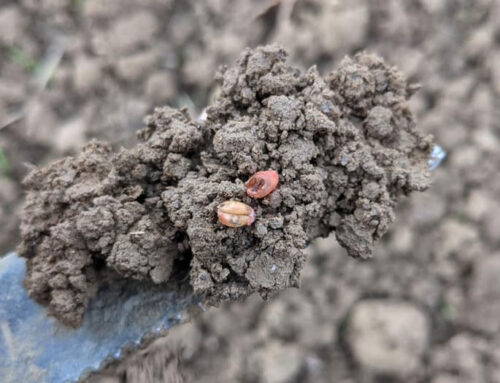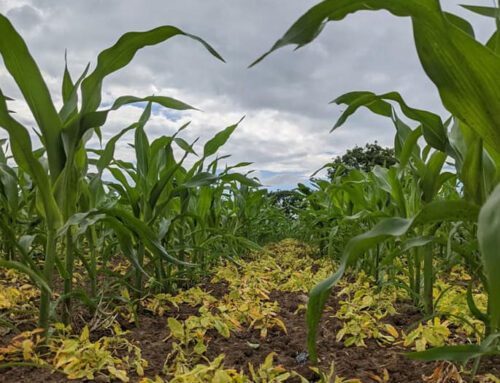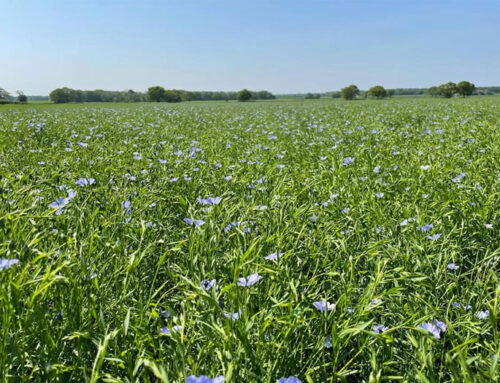Well, what can I say it looks like my 4 am rain dances earlier in the month served their purpose. Like Johnny’s drop goal in the 2003 world cup the rain came just in time. To date in Ryedale, North Yorkshire we have had a total 57.2mm of rain this month and without sounding ungrateful is sufficient…for now! The low temperatures accompanying the first cloud breaks meant crops broke into a slow canter rather than a final furlong sprint. This posed a few minor headaches for plant growth regulation programmes in some crops, namely winter barleys. Delayed applications of trinexapac and chlormequat meant a close follow up with a second growth regulator on to drought-stressed crops was not advisable. However, the arrival of rain has provided an about-turn for some crops and started a race against time to get them applied before the ears emerge. A slight rise in temperatures into the mid-teens last week spurred crops to take up the previously applied nitrogen and with its Pfizer boost soon kicked into gear leaving crops now looking fantastic and full of potential. This coupled with the increased commodity price can only mean smiley faces all round… surely.
Oilseed rape continues to flower in a duller yellow rather than the characteristic bright yellow we are accustomed too. Crops are at various stages however despite the recent rain I will be favouring a late flowering one hit sclerotinia spray based around prothioconazole.
Winter wheats by now should all have had their T1 fungicide applications with those later sown stragglers being the exception. Yellow rust has been the focus of attention in varieties such as Skyfall, Zyatt and Kerrin. The inclusion of a triazole in the mix has proven valuable in burning out the fungus. Alongside SDHI chemistry this should help keep crops clean and protected until the T2 timing. My latest crop inspections have revealed that leaf 2 is already having a sneaky peak into spring while the earlier drilled crops have flag leaf just starting to emerge. In my experience dry springs leave canopies open and seemingly dead weeds coupled new weed flushes mean another round of close inspections. May is a beautiful month in the UK as crops start to flourish and the countryside truly is a verdant green. Sadly June usually reveals all the problems as a canopy of weeds head for the sky making you wonder how did that happen!
Spring crops are also showing signs of life after receiving a well-awaited drink. Patchy conventionally drilled crops are starting to even up with weed flushes following suit. Dependent on weed populations and target weeds I like to advise a ¾ rate sulphonylurea and herbicide partner alongside a low dose fungicide to keep on top of mildew. Manganese will routinely be applied on all crops as this is vital in keeping the plant healthy in its early stages.
My early drilled fodder beets on kind land are now rowed up and ready for their first herbicide application. Anyone who read my previous publications will know I prefer the two spray broadacre programme. Both applications are made up of low doses of several actives applied within a short sequence of each other. Timing is key with this programme however some product rates can be altered to allow for marginal flexibility.
Winter linseeds are growing day by day and will soon be receiving their final nitrogen dose while its spring counterpart is establishing well and, in most cases, now away from flax flea beetle threat.
Winter beans have first flowers opening and although being a hay fever suffering agronomist, it is a welcomed smell I always look forward to. Crops remain reasonably clean now so an early flowering tebuconazle based fungicide will be my preferred approach. This will hopefully keep the crop clean to later flowering where the need for chocolate spot specific treatments can be considered.




